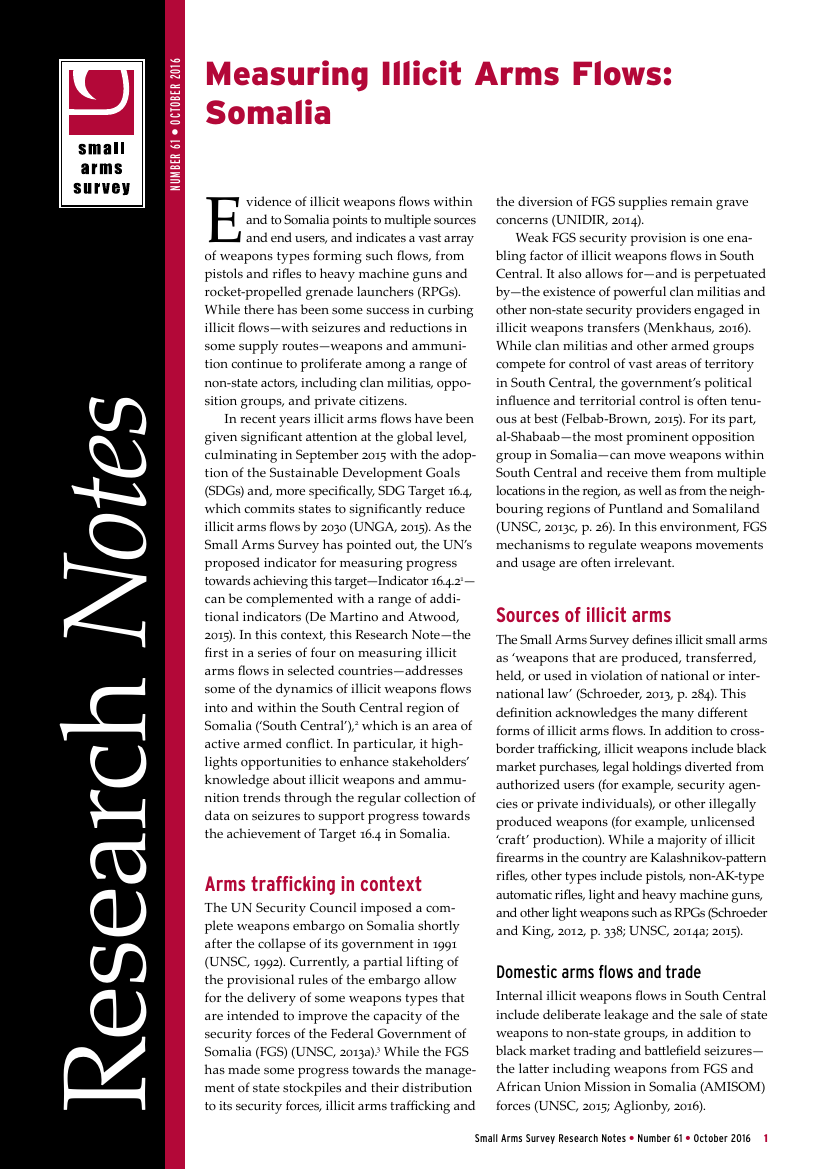
Measuring Illicit Arms Flows: Somalia (Research Note 61)
In recent years illicit arms flows have been given significant attention at the global level, culminating in September 2015 with the adoption of the Sustainable Development Goals (SDGs) and, more specifically, SDG Target 16.4, which commits states to significantly reduce illicit arms flows by 2030. In support of Target 16.4, researchers have recognized the utility of collecting different types of longitudinal data to measure efforts to curb illicit weapons flows, including data collection on illicit weapons seizures and monitoring pricing changes of black market weapons and ammunition trading.
This Research Note—the first in a series of four on measuring illicit arms flows in selected countries—addresses some of the dynamics of illicit weapons flows into and within the South Central region of Somalia, which is an area of active armed conflict. Measuring Illicit Arms Flows: Somalia explores the multiple challenges faced by the Federal Government of Somalia to control illicit firearms within South Central Somalia, as well as the difficulties adhering to the UN arms embargo covering the country. It describes how the collection of different types of data on, for example, weapons seizures and prices, can enhance stakeholders’ knowledge about illicit weapons and ammunition trends.
Key findings of this report include the following:
- Internal sources of illicit weapons in South Central include deliberate leakage or sale of state weapons, black market trading, and battlefield seizures.
- External sources of illicit weapons include non-state armed groups like al-Shabaab and deliveries from other nations to armed forces that are not part of the Federal Government of Somalia.
- Tracking weapons and ammunition seizures data in Somalia can provide key information that helps stakeholders understand illicit weapons flows.
- The lack of systematic collection of weapons seizure data in Somalia makes it more difficult to understand current and evolving dynamics of illicit weapons proliferation.
- Monitoring the prices of illicit weapons and ammunition in Somalia can help identify changes in illicit market and security dynamics.
- Though current pricing information illustrates the utility of collecting regular and detailed data on prices, establishing more systematic data collection mechanisms would lead to firmer conclusions.
Also available in ARABIC
Have your say about Small Arms Survey publications and products: take 5 minutes to fill out our questionnaire.